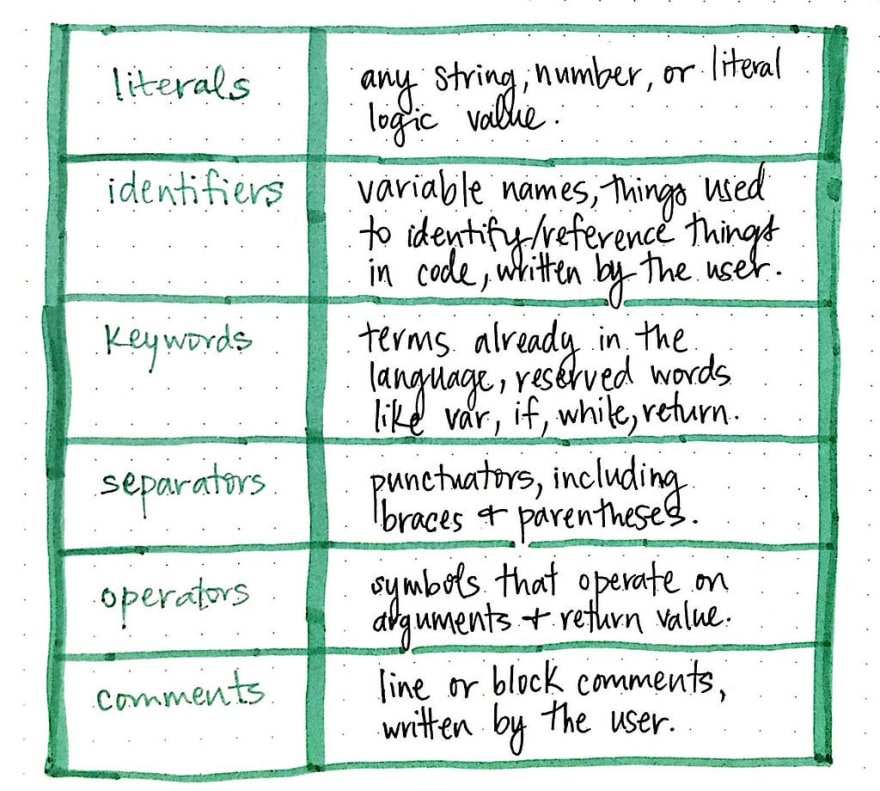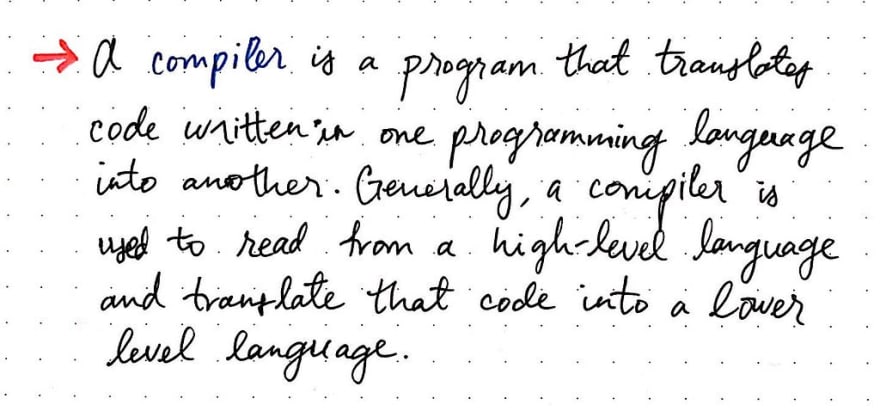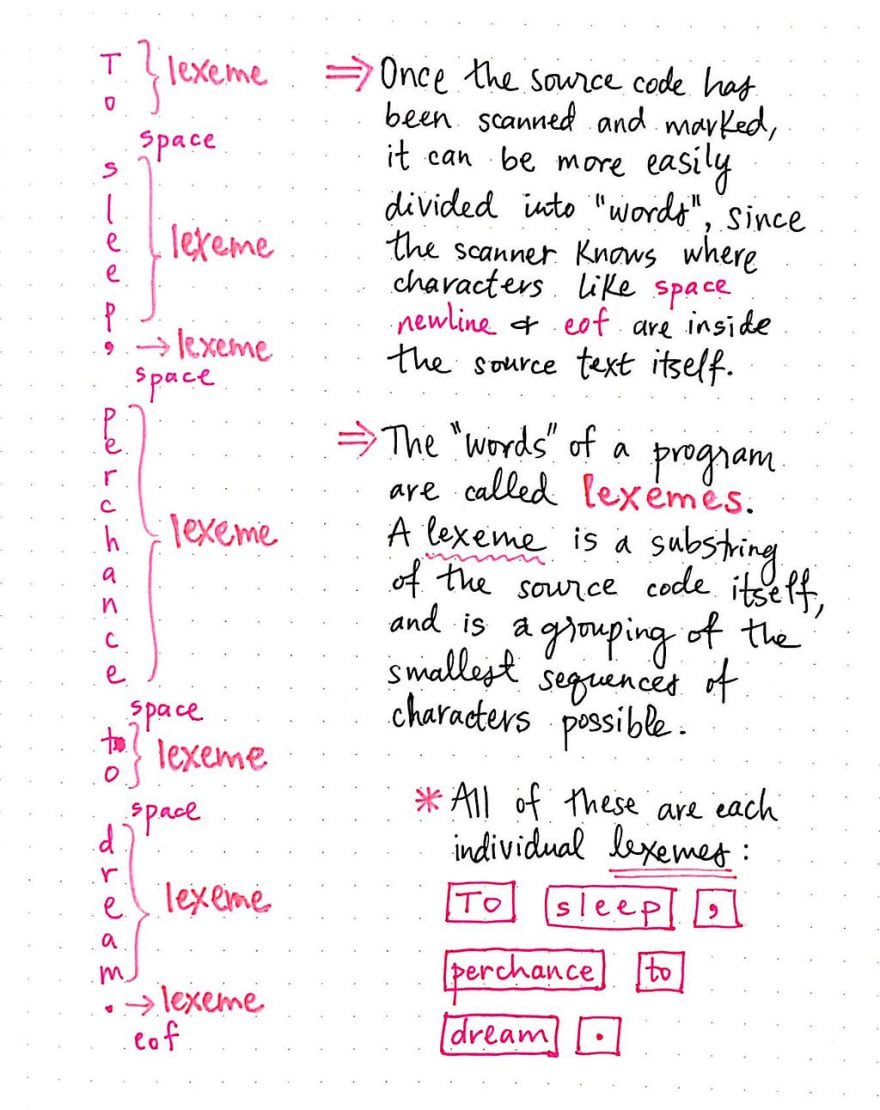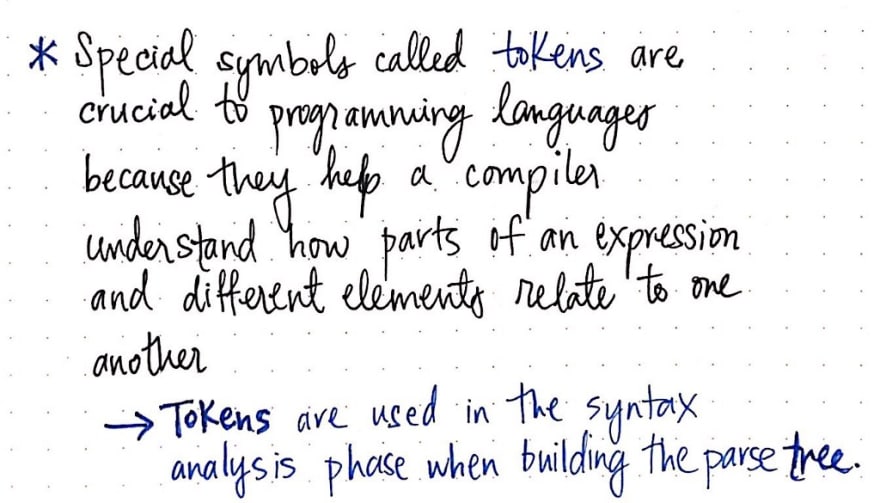
Software is all about logic. Programming has garnered a reputation of being a field that is heavy on the math and crazy equations. And computer science seems to be at the crux of this misconception.
Sure, there is some math and there are some formulas — but none of us actually need to have PhDs in calculus in order for us to understand how our machines work! In fact, a lot of the rules and paradigms that we learn in the process of writing code are the same rules and paradigms that apply to complex computer science concepts. And sometimes, those ideas actually stem from computer science, and we just didn’t ever know it.
Regardless of what programming language we use, when most of us write our code, we aim to encapsulate distinct things into classes, objects, or methods, intentionally separating out what different parts of our code are concerned with. In other words, we know that it’s generally good things to divide up our code so that one class, object, or method is only concerned with and responsible for one single thing. If we didn’t do this, things could get super messy and intertwined into a mess of a web. Sometimes this still happens, even with separation of concerns.
As it turns out, even the inner workings of our computers follow very similar design paradigms. Our compiler, for example, has different parts to it, and each part is responsible for handling one specific part of the compilation process. We encountered a little bit of this last week, when we learned about the parser, which is responsible for creating parse trees. But the parser can’t possibly be tasked with everything.
The parser needs some help from its buddies, and it’s finally time for us to learn who they are!
Phasing into compilers
When we learned about parsing recently, we dipped our toes into grammar, syntax, and how the compiler reacts and responds to those things within a programming language. But we never really highlighted what exactly a compiler is! As we get into the inner workings of the compilation process, we’re going to be learning a lot about compiler design, so it’s vital for us to understand what exactly we’re talking about here.
Compilers can sound kind of scary, but their jobs are actually not too complex to understand — particularly when we break the different parts of a complier down into bite-sized parts.
But first, let’s start with the simplest definition possible. A compiler is a program that reads our code (or any code, in any programming language), and translates it into another language.
Generally speaking, a compiler is really only ever going to translate code from a high-level language into a lower level language. The lower level languages that a compiler translates code into is often referred to as assembly code, machine code, or object code. It’s worth mentioning that most programmers aren’t really dealing with or writing any machine code; rather, we depend on the compiler to take our programs and translate them into machine code, which is what our computer will run as an executable program.
We can think of compilers as the middleman between us, the programmers, and our computers, which can only run executable programs in lower level languages.
The compiler does the work of translating what we want to happen in a way that is understandable and executable by our machines.
Without the compiler, we’d be forced to communicate with our computers by writing machine code, which is incredibly unreadable and hard to decipher. Machine code can often just look like a bunch of 0’s and 1’s to the human eye — it’s all binary, remember? — which makes it super hard to read, write, and debug. The compiler abstracted away machine code for us as programmers, because it made it very easy for us to not think about machine code and write programs using far more elegant, clear, and easy-to-read languages.
We’ll continue to unpack more and more about the mysterious compiler over the next few weeks, which will hopefully make it less of an enigma in the process. But for now, let’s get back to the question at hand: what are the simplest possible parts of a compiler?
Each compiler, no matter how it might be designed, has distinct phases. These phases are how we can distinguish the unique parts of the compiler.

We’ve already encountered one of the phases in our compilation adventures when we recently learned about the parser and parse trees. We know that parsing is the process of taking some input and building a parse tree out of it, which is sometimes referred to as the act of parsing. As it turns out, the work of parsing is specific to a phase in the compilation process called syntax analysis.
However, the parser doesn’t just build a parse tree out of thin air. It has some help! We’ll recall that the parser is given some tokens (also called terminals), and it builds a parse tree from those tokens. But where does it get those tokens from? Lucky for the parser, it doesn’t have to operate in a vacuum; instead, it has some help.
This brings us to another phase of the compilation process, one that comes before the syntax analysis phase: the lexical analysis phase.

The term “lexical” refers to the meaning of a word in isolation from the sentence containing it, and regardless of its grammatical context. If we try to guess our own meaning based solely upon this definition, we could posit that the lexical analysis phase has to do with the individual words/terms in the program themselves, and nothing to do with the grammar or the meaning of the sentence that contains the words.
The lexical analysis phase is the first step in the compilation process. It doesn’t know or care about the grammar of a sentence or the meaning of a text or program; all it knows about are the meaning of the words themselves.
Lexical analysis must occur before any code from a source program can be parsed. Before it can be read by the parser, a program must first be scanned, split up, and grouped together in certain ways.
When we started looking at the syntax analysis phase last week, we learned that the parse tree is built by looking at individual parts of the sentence and breaking down expressions into simpler parts. But during the lexical analysis phase, the compiler doesn’t know or have access to these “individual parts”. Rather, it has to first identify and find them, and then do the work of splitting apart the text into individual pieces.
For example, when we read a sentence from Shakespeare like To sleep, perchance to dream., we know that the spaces and the punctuation are dividing up the “words” of a sentence. This is, of course, because we’ve been trained to read a sentence, “lex” it, and parse it for grammar.
But, to a compiler, that same sentence might look like this the first time that it reads it: Tosleepperhachancetodream. When we read this sentence, it’s a little harder for us to determine what the actual “words” are! I’m sure our compiler feels the same way.
So, how does our machine deal with this problem? Well, during the lexical analysis phase of the compilation process, it always does two important things: it scans the code, and then it evaluates it.

The work of scanning and evaluating can sometimes be lumped together into one single program, or it could be two separate programs that depend on one another; it’s really just a question of how any one complier happened to be designed. The program within the compiler which is responsible for doing the work of scanning and evaluating is often referred to as the lexer or the tokenizer , and the entire lexical analysis phase is sometimes called the process of lexing or tokenizing.
To scan, perchance to read
The first of the two core steps in lexical analysis is scanning. We can think of scanning as the work of actually “reading” some input text. Remember that this input text could be a string, sentence, expression, or even an entire program! It doesn’t really matter, because, in this phase of the process, it’s just a giant blob of characters that doesn’t mean anything just yet, and is one contiguous chunk.
Let’s look at an example to see how exactly this happens. We’ll use our original sentence, To sleep, perchance to dream., which is our source text or source code. To our compiler, this source text will be read as input text that looks like Tosleep,perchancetodream., which is just a string of characters that has yet to be deciphered.
The first thing our compiler has to do is actually divide up that blob of text into its smallest possible pieces, which will make it much easier to identify where the words in the blob of text actually are.
The simplest way of diving up a giant chunk of text is by reading it slowly and systematically, one character at a time. And this is exactly what the compiler does.
Oftentimes, the scanning process is handled by a separate program called the scanner , whose sole job it is to do the work of reading a source file/text, one character at a time. To our scanner, it doesn’t really matter how big our text is; all it will see when it “reads” our file is one character at a time.
Here’s what our Shakespearean sentence would be read as by our scanner:
We’ll notice that To sleep, perchance to dream. has been split into individual characters by our scanner. Furthermore, even the spaces between the words are being treated as characters, as is the punctuation in our sentence. There’s also a character at the end of this sequence that is particularly interesting: eof. This is the character “end of file”, and it’s similar to tab, space, and newline. Since our source text is just one single sentence, when our scanner gets to the end of the file (in this case, the end of the sentence), it reads the end of file and treats it as a character.
So, in actuality, when our scanner read our input text, it interpreted it as individual characters which resulted in this: ["T", "o", space, "s", "l", "e", "e", "p", ",", space, "p", "e", "r", "c", "h", "a", "n", "c", "e", space, "t", "o", space, "d", "r", "e", "a", "m", ".", eof].
Now that our scanner has read and split up our source text into its smallest possible parts, it will have a much easier time of figuring out the “words” in our sentence.
Next, the scanner needs to look at its split up characters in order, and determine which characters are parts of a word, and which ones are not. For each character that the scanner reads, it marks the line and the position of where that character was found in the source text.
The image shown here illustrates this process for our Shakespearean sentence. We can see that our scanner is marking the line and the column for each character in our sentence. We can think of the line and column representation as a matrix or array of characters.
Recall that, since our file has only one single line in it, everything lives at line 0. However, as we work our way through the sentence, the column of each character increments. It’s also worth mentioning that, since our scanner reads spaces, newlines, eof, and all punctuation as characters, those appear in our character table, too!
Once the source text has been scanned and marked, our compiler is ready to turn these characters into words. Since the scanner knows not just where the spaces, newlines, and eof in the file are, but also where they live in relation to the other characters surrounding them, it can scan through the characters, and divide the them into individual strings as necessary.
In our example, the scanner will look at the characters T, then o, and then a space. When it finds a space, it will divide To into its own word — the simplest combination of characters possible before the scanner encounters a space.
It’s a similar story for the next word that it finds, which is sleep. However, in this scenario, it reads s-l-e-e-p, and then reads a ,, a punctuation mark. Since this comma is flanked by a character (p) and a space on either side, the comma is, itself, considered to be a “word”.
Both the word sleep and the punctuation symbol , are called lexemes , which are substrings the source text. A lexeme is a grouping of the smallest possible sequences of characters in our source code. The lexemes of a source file are considered the individual “words” of the file itself. Once our scanner finishes reading the single characters of our file, it will return a set of lexemes that look like this: ["To", "sleep", ",", "perchance", "to", "dream", "."].
Notice how our scanner took a blob of text as its input, which it couldn’t initially read, and proceeded to scan it once character at a time, simultaneously reading and marking it the content. It then proceeded to divide the string into their smallest possible lexemes by using the spaces and punctuation between characters as delimiters.
However, despite all of this work, at this point in the lexical analysis phase, our scanner doesn’t know anything about these words. Sure, it split up the text into words of different shapes and sizes, but as far as what those words are the scanner has no idea! The words could be a literal string, or they could be a punctuation mark, or they could be something else entirely!
The scanner doesn’t know anything about the words themselves, or what “type” of word they are. It just knows where the words end and begin within the text itself.
This sets us up for the second phase of lexical analysis: evaluation. Once we’ve scanned our text and broken up the source code into individual lexeme units, we must evaluate the words that the scanner returned to us and figure out what types of words we’re dealing with — in particular, we must look for important words that mean something special in the language we’re trying to compile.
Evaluating the important parts
Once we’ve finished scanning our source text and identified our lexemes, we’ll need to do something with our lexeme “words”. This is the evaluation step of lexical analysis, which is often referred to in complier design as the process of lexing or tokenizing our input.

When we evaluate our scanned code, all we’re really doing is taking a closer look at each of the lexemes that our scanner generated. Our compiler will need to look at each lexeme word and decide what kind of word it is. The process of determining what kind of lexeme each “word” in our text is how our compiler turns each individual lexeme into a token, thereby tokenizing our input string.
We first encountered tokens back when we were learning about parse trees. Tokens are special symbols that are at the crux of each programming language. Tokens, such as (, ), +, -, if, else, then, all help a compiler understand how different parts of an expression and various elements relate to one another. The parser, which is central to the syntax analysis phase, depends on receiving tokens from somewhere and then turns those tokens into a parse tree.
Well, guess what? We’ve finally figured out the “somewhere”! As it turns out, the tokens that get sent to the parser are generated in the lexical analysis phase by the tokenizer , also called the lexer.

So what exactly does a token look like? A token is fairly simple, and is usually represented as a pair, consisting of a token name, and some value (which is optional).
For example, if we tokenize our Shakespearean string, we’d end up with tokens that would be mostly string literals and separators. We could represent the lexeme “dream” as a token like so: <string literal, "dream">. In a similar vein, we could represent the lexeme . as the token, <separator, .>.
We’ll notice that each of these tokens aren’t modifying the lexeme at all — they’re simply adding additional information to them. A token is lexeme or lexical unit with more detail; specifically, the added detail tells us what category of token (what type of “word”) we’re dealing with.
Now that we’ve tokenized our Shakespearean sentence, we can see that there’s not all that much variety in the types of tokens in our source file. Our sentence only had strings and punctuation in it — but that’s just the tip of the token iceberg! There are plenty of other types of “words” that a lexeme could be categorized into.

The table shown here illustrates some of the most common tokens that our compiler would see when reading a source file in pretty much any programming language. We saw examples of literals, which can be any string, number, or logic/boolean value, as well as separators, which are any type of punctuation, including braces ({}) and parentheses (()).
However, there are also keywords, which are terms that are reserved in the language (such as if, var, while, return), as well as operators, which operate on arguments and return some value ( +, -, x, /). We could also encounter lexemes that could be tokenized as identifiers, which are usually variable names or things written by the user/programmer to reference something else, as well as comments, which could be line or block comments written by the user.
Our original sentence only showed us two examples of tokens. Let’s rewrite our sentence to instead read: var toSleep = "to dream";. How might our compiler lex this version of Shakespeare?

Here, we’ll see that we have a larger variety of tokens. We have a keyword in var, where we’re declaring a variable, and an identifier, toSleep, which is the way that we’re naming our variable, or referencing the value to come. Next is our =, which is an operator token, followed by the string literal "to dream". Our statement ends with a ; separator, indicating the end of a line, and delimitating whitespace.
An important thing to note about the tokenization process is that we’re neither tokenizing any whitespace (spaces, newlines, tabs, end of line, etc.), nor passing it on to the parser. Remember that only the tokens are given to the parser and will end up in the parse tree.
It’s also worth mentioning that different languages will have different characters that constitute as whitespace. For example, in some situations, the Python programming language uses indentation — including tabs and spaces — in order to indicate how the scope of a function changes. So, the Python compiler’s tokenizer needs to be aware of the fact that, in certain situations, a tab or space actually does need to be tokenized as a word, because it actually does need to be passed to the parser!

This aspect of the tokenizer is a good way of contrasting how a lexer/tokenizer is different from a scanner. While a scanner is ignorant, and only knows how to break up a text into its smaller possible parts (its “words”), a lexer/tokenizer is much more aware and more precise in comparison.
The tokenizer needs to know the intricacies and specifications of the language that is being compiled. If tabs are important, it needs to know that; if newlines can have certain meanings in the language being compiled, the tokenizer needs to be aware of those details. On the other hand, the scanner doesn’t even know what the words that it divides even are, much less what they mean.
The scanner of a complier is far more language-agnostic, while a tokenizer must be language-specific by definition.
These two parts of the lexical analysis process go hand-in-hand, and they are central to the first phase of the compilation process. Of course, different compliers are designed in their own unique ways. Some compilers do the step of scanning and tokenizing in one single process and as a single program, while others will split them up into different classes, in which case the tokenizer will call out to the scanner class when it is run.

In either case, the step of lexical analysis is super important to compilation, because the syntax analysis phase directly depends upon it. And even though each part of the compiler has its own specific roles, they lean on one another and depend on each other — just like good friends always do.
Resources
Since there are many different ways to write and design a compiler, there are also many different ways to teach them. If you do enough research on the basics of compilation, it becomes pretty clear that some explanations go into far more detail than others, which may or may not be helpful. If you find yourself wanting to learn more, below are a variety of resources on compilers — with a focus on the lexical analysis phase.
- Chapter 4 — Crafting Interpreters, Robert Nystrom
- Compiler Construction, Professor Allan Gottlieb
- Compiler Basics, Professor James Alan Farrell
- Writing a programming language — the Lexer, Andy Balaam
- Notes on How Parsers and Compilers Work, Stephen Raymond Ferg
- What is the difference between a token and a lexeme?, StackOverflow













Top comments (5)
Great post!! Good to recollect the compilers learnt in my undergrad.
Special Kudos for the effort you put in writing the blog.
BTW do you use Evernote by any chance? The handwritten notes looks like Evernote.
Nope, I'm old school: hand-drawn everything! 😎
Great post!! I'm jealous of how you explain things in simple terms, great work :)
@ben just thinking out loud, we need to support some sort of "wiki" thing to save posts like this one for future readers, it shouldn't be lost in history, right?
Yeah totally.
once again, thank you Vaidehi!